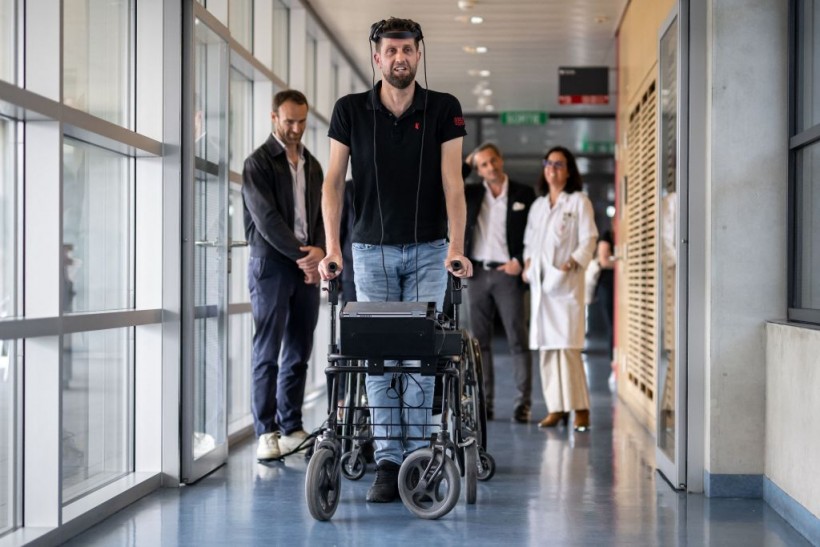Gert-Jan Oskam, a 40-year-old man from the Netherlands, experienced paralysis after a severe bicycle accident in China in 2011. According to MailOnline, this accident resulted in the loss of his leg mobility. However, thanks to groundbreaking electronic brain implants, he has now regained the ability to control his legs.
Through the use of electronic brain implants, Gert-Jan has accomplished the remarkable feat of walking again by solely directing his thoughts. This groundbreaking development has had a life-changing impact on him, representing a groundbreaking medical breakthrough in enabling paralyzed individuals to regain mobility.

Gert-Jan from the Netherlands, (who did not wish to give his surname), 40, victim of a spinal cord injury that left him paralyzed, poses with his implants that allows him to walk naturally, during a press conference in Lausanne on May 23, 2023.
Like a Toddler Who Started Walking Again
Heartwarming footage captures Gert-Jan's remarkable progress as he stands, walks, and climbs stairs with the aid of a mind-reading device. Developed by neuroscientist Gregoire Courtine from école Polytechnique Fédérale de Lausanne (EPFL), the innovative technology is described as a "digital rebirth" of the spinal cord.
Gert-Jan's thoughts are wirelessly transmitted to his legs and feet through electronic implants, with a second implant on his spine. Although the system is still in the experimental stage, the leading UK spinal charity has expressed optimism about its development.
Gert-Jan told BBC News that it feels like he is learning to walk again. He expresses his joy in being able to stand up and enjoy simple pleasures like having a beer with a friend.
The research, titled "Walking Naturally After Spinal Cord Injury Using a Brain-Spine Interface" led by Swiss scientists and published in the journal Nature, emphasizes that the technology is currently in the early research phase and will take many more years before it becomes available to paralyzed patients.
Despite the challenges ahead, the team aims to move the technology out of the lab and into clinical settings as soon as possible, with the ultimate goal of providing access to more people with spinal cord injuries who have been told they will never regain movement.
Spinal Research, a UK charity focused on spinal cord injury, views this development as a positive step toward restoring function and independence for individuals with such injuries.
READ ALSO: Brain Implant Powered by Breathing May Help Improve Lives of People With Neurological Disorders
How the Electronic Implants Work
In the surgical procedure carried out in July 2021, Prof. Jocelyne Bloch of Lausanne University inserted two disc-shaped electronic implants into Gert-Jan's skull to transmit brain signals wirelessly.
These signals, translated by an algorithm, generate instructions for muscle movement in the legs and feet through a second implant intricately attached to the nerve endings related to walking in his spinal cord.
Guillaume Charvet, the project's leader, said the implants utilize "adaptive artificial intelligence" to interpret real-time movement intentions from the brain. As Sky News reported, the signals are converted into sequences of electrical stimulation that activate the leg muscles through the spinal cord, enabling the desired movements once the AI identifies them.
Surprisingly, even when the digital bridge was turned off, the patient experienced sustained improvements in sensory perceptions and motor skills, enabling him to walk with crutches. Professor Gregoire Courtine suggests that this indicates the digital bridge not only restored the function of the patient's spinal cord but also facilitated the growth of new nerve connections.
RELATED ARTICLE: Paralyzed Man Speaks and Asks for Beer Using His Mind Through Microchip Brain Implant
Check out more news and information on Neuroscience in Science Times.














